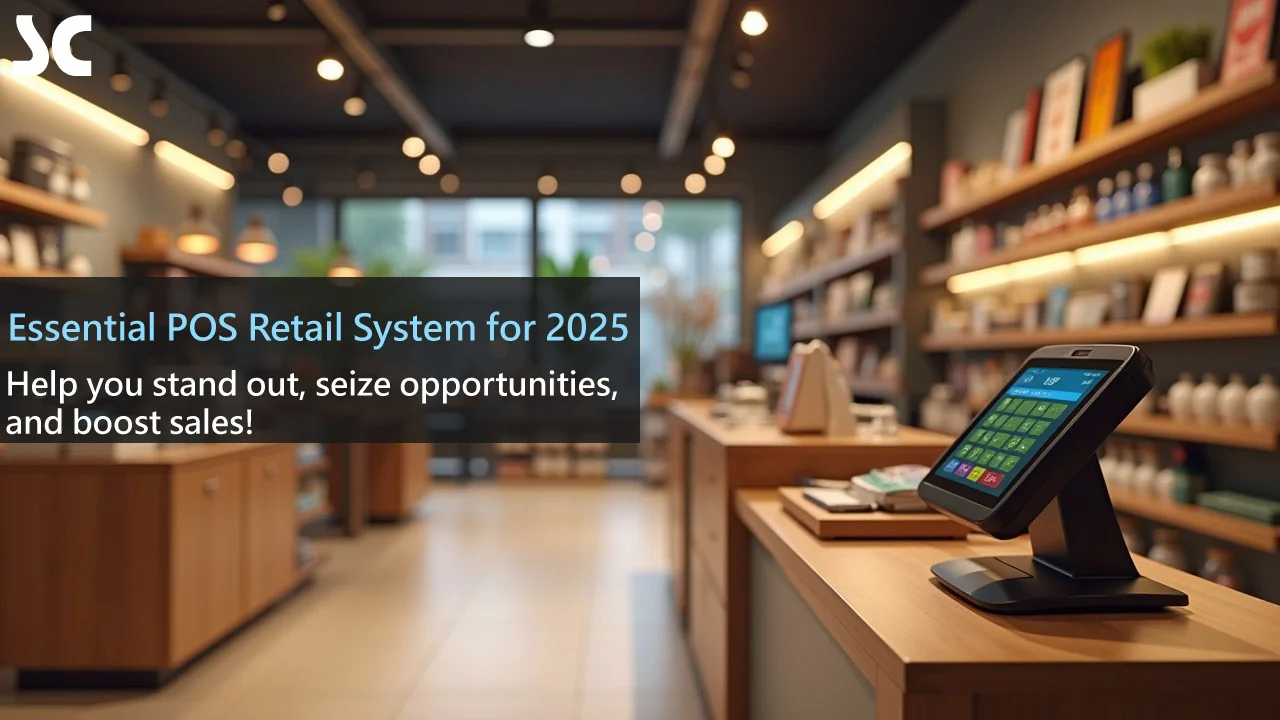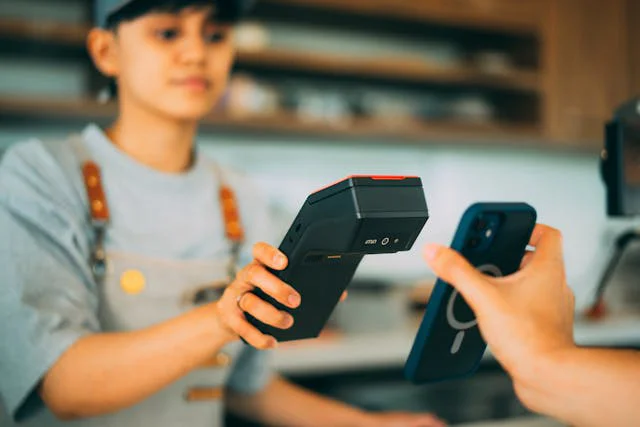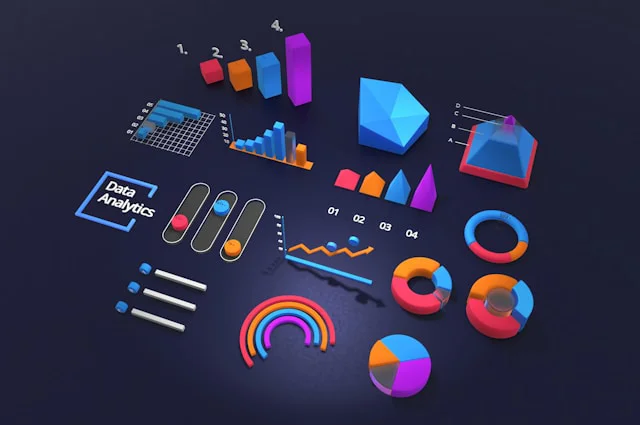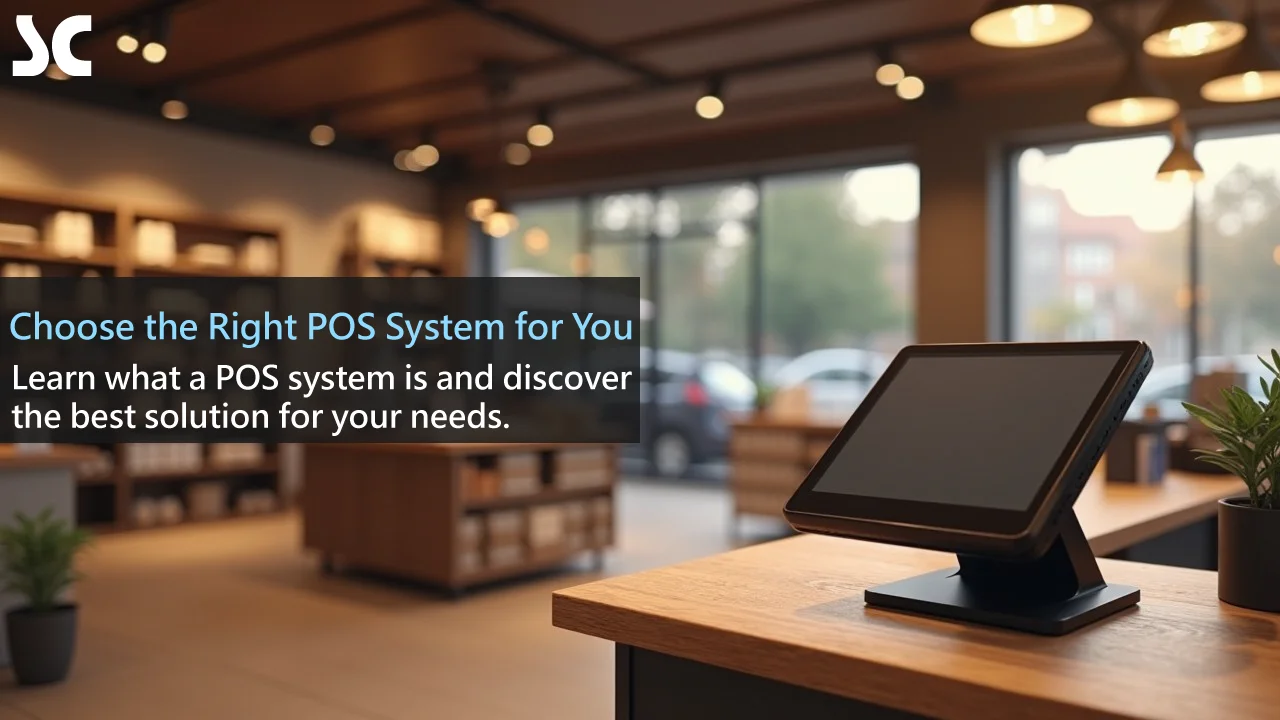In the fast-paced world of retail, staying ahead of the curve is crucial for success. As we approach 2025, one technology stands out as a game-changer for businesses looking to boost their sales efficiency: the Point of Sale (POS) retail system. In this comprehensive guide, we'll explore why a cutting-edge POS system is no longer just an option but a must-have for retailers aiming to thrive in the competitive market landscape.

The Importance of POS Retail Systems
Traditional Cashiering vs. Modern POS Systems
Remember those traditional cash registers that required manual calculations and were prone to errors? In comparison, modern POS systems are like superheroes of the retail industry, not only processing transactions quickly and accurately but also managing inventory, generating reports, and even analyzing customer behavior simultaneously. This comprehensive functional integration allows store owners to focus more on providing quality customer service rather than being bogged down by tedious backend work.

How POS Systems Improve Sales Efficiency
Imagine when a customer visits your store, the POS system not only completes checkout quickly but also recommends relevant products based on their purchase history and even offers personalized discounts. Such scenarios have become reality with modern POS systems. Through automated processes, real-time data analysis, and personalized marketing, POS systems can significantly increase transaction speed, boost average order value, and enhance customer loyalty.
2. Essential POS Retail System Features in 2025
Cloud Integration and Data Synchronization
POS systems in 2025 will no longer be limited to single devices or locations. The widespread application of cloud technology means you can check sales data, inventory status, and even manage multiple stores remotely at any time. This real-time capability and flexibility will greatly improve the efficiency and accuracy of business decisions.
Multi-Channel Sales Integration
Future consumers will increasingly value omnichannel shopping experiences. An excellent POS system should seamlessly integrate online stores, social media sales, physical stores, and other sales channels, providing unified inventory management and customer data synchronization to ensure consistent experiences regardless of which channel customers use to make purchases.
Artificial Intelligence and Predictive Analytics
AI will become standard in 2025 POS systems. By analyzing massive transaction data and customer behavior, AI can predict sales trends, optimize inventory management, and even automatically adjust pricing strategies. This not only helps stores reduce inventory buildup but also launches the most attractive promotions at the right time.
Mobile Payments and Contactless Transactions
With the increasing popularity of mobile payments and growing emphasis on hygiene safety, supporting various payment methods and contactless transactions will become essential features of POS systems. Whether it's Apple Pay, Google Pay, or various digital wallets, flexible payment options not only increase customer satisfaction but also speed up the checkout process.

Customer Relationship Management (CRM) Integration
2025 POS systems will be more than just transaction tools; they will become powerful CRM platforms. By collecting and analyzing customer data, the system can help stores establish personalized loyalty programs, deliver customized promotions, and provide more attentive customer service, thereby building long-term customer relationships.
3. Choosing the Right POS Retail System
Evaluating Business Needs
When choosing a POS system, first clarify your business needs. Do you need inventory management? Does it involve multi-store operations? Do you need integration with other systems (such as accounting software)? Create a detailed list of requirements, which will be an important basis for choosing your system.
Comparing Different Vendors
With numerous POS system vendors in the market, how do you choose the most suitable one? Besides feature comparison, consider the vendor's reputation, quality of customer support, system stability, and security. It's worth asking industry peers about their user experience or seeking professional consultants' advice.
Considering Scalability and Future Development
Choosing a POS system requires consideration not only of current needs but also future development. Is the system easily expandable? Can it adapt to new technology trends? Does the vendor regularly update system features? Choosing a forward-thinking and flexible system can provide strong support for long-term business development.

4. POS Retail System Implementation Strategy
Employee Training and Adaptation
Even the most advanced POS system cannot deliver value if employees don't know how to operate it. Develop comprehensive training programs to ensure every employee is proficient in using all system features. Meanwhile, encourage employee feedback for continuous optimization of the system user experience.
Data Migration and System Integration
Migrating from an old system to a new POS system can be complex. Ensure all crucial data (such as customer information and inventory data) transfers smoothly and integrates seamlessly with existing business systems (like accounting software and ERP systems). This may require professional technical support, but the investment is definitely worthwhile.
5. Return on Investment for POS Retail Systems
Improving Operational Efficiency
An excellent POS system can significantly improve store operations efficiency. Automated inventory management, fast checkout processes, and simplified report generation can help save substantial labor and time costs. In the long term, this not only increases profit margins but also allows store owners to focus more on business development and customer service.
Increasing Customer Satisfaction
In the competitive retail market, customer experience is key to success. Modern POS systems offering fast checkout, personalized recommendations, and flexible payment options can significantly enhance customer satisfaction. Satisfied customers are more likely to become repeat customers and bring new customers through word-of-mouth.
Data-Driven Decision
Perhaps the greatest value of POS systems lies in their ability to provide deep business insights. By analyzing sales trends, customer behavior, and inventory turnover, store owners can make more informed business decisions. For example, adjusting product mix based on sales data or developing more effective marketing strategies based on customer purchasing habits.

6. Conclusion
As 2025 approaches, having an advanced POS retail system will no longer be just an advantage but a necessary condition for business survival and development. From improving operational efficiency to enhancing customer experience and supporting data-driven decisions, POS systems play an increasingly important role in modern retail.
Choosing the right POS system is not an overnight process; it requires careful evaluation, comparison, and planning. However, finding a system that meets your business needs and making good use of its features will definitely help you gain advantages in fierce market competition and drive continuous business growth.
In the face of digital transformation, take action now to select a POS system for your business that meets current needs and has future scalability. Remember, in the rapidly changing retail world, embracing new technology is not just a wise move but a necessary choice to maintain competitiveness. Let's welcome the smarter and more efficient retail era of 2025 together!
7. Frequently Asked Questions (FAQs)
- Q: Why are POS systems so important in 2025?
A: 2025 POS systems integrate advanced features like cloud technology, AI analytics, and multi-channel sales, significantly improving operational efficiency, customer experience, and decision-making capabilities, making them crucial tools for businesses to maintain competitiveness in the digital age. - Q: How do I know if my current POS system needs upgrading?
A: If your system cannot support multi-channel sales, lacks data analysis capabilities, cannot integrate with other business systems, or fails to meet customer demands for quick checkout and multiple payment methods, it might be time to consider an upgrade. - Q: How long does it take to implement a new POS system?
A: Implementation time varies depending on business size and system complexity, typically ranging from weeks to months. The key is thorough preparation, including data migration, system integration, and employee training. - Q: How is data security ensured in POS systems?
A: Modern POS systems typically use encryption technology to protect data transmission and storage, and provide multi-level access control. Choosing reputable vendors and regularly updating the system can further enhance security. - Q: Do small businesses need to invest in high-end POS systems?
A: Not necessarily the most high-end systems, but having basic POS functionality is important for small businesses. Many vendors offer solutions suitable for small businesses that can be upgraded gradually as the business grows. The focus should be on choosing a system that meets current needs while supporting future expansion.



